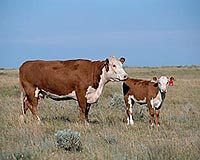 |
Davis CA (SPX) Jul 22, 2009 Winter chill, a vital climatic trigger for many tree crops, is likely to decrease by more than 50 percent during this century as global climate warms, making California no longer suitable for growing many fruit and nut crops, according to a team of researchers from the University of California, Davis, and the University of Washington. In some parts of California's agriculturally rich Central Valley, winter chill has already declined by nearly 30 percent, the researchers found. "Depending on the pace of winter chill decline, the consequences for California's fruit and nut industries could be devastating," said Minghua Zhang, a professor of environmental and resource science at UC Davis. Also collaborating on the study were Eike Luedeling, a postdoctoral fellow in UC Davis' Department of Plant Sciences and UC Davis graduate Evan H. Girvetz, who is now a postdoctoral research associate at the University of Washington, Seattle. Their study will appear July 22 in the online journal PLoS ONE. The study is the first to map winter chill projections for all of California, which is home to nearly 3 million acres of fruit and nut trees that require chilling. The combined production value of these crops was $7.8 billion in 2007, according to the California Department of Food and Agriculture. "Our findings suggest that California's fruit and nut industry will need to develop new tree cultivars with reduced chilling requirements and new management strategies for breaking dormancy in years of insufficient winter chill," Luedeling said.
About winter chill In order to break dormancy and resume growth, the trees must receive a certain amount of winter chill, traditionally expressed as the number of winter chilling hours between 32 and 45 degrees Fahrenheit. Each species or cultivar is assumed to have a specific chilling requirement, which needs to be fulfilled every winter. Insufficient winter chill plays havoc with flowering time, which is particularly critical for trees such as walnuts and pistachios that depend on male and female flowering occurring at the same time to ensure pollination and a normal yield.
Planning for a warmer future "Since orchards often remain in production for decades, it is important that growers now consider whether there will be sufficient winter chill in the future to support the same tree varieties throughout their producing lifetime," Zhang said. To provide accurate projections of winter chill, the researchers used hourly and daily temperature records from 1950 and 2000, as well as 18 climate scenarios projected for later in the 21st century. They introduced the concept of "safe winter chill," the amount of chilling that can be safely expected in 90 percent of all years. They calculated the amount of safe winter chill for each scenario and also quantified the change in area of a safe winter chill for certain crop species.
New findings Using data from climate models developed for the Intergovernmental Panel on Climate Change Fourth Assessment Report (2007), the researchers projected that winter chill will have declined from the 1950 baseline by as much as 60 percent by the middle of this century and by up to 80 percent by the end of the century. Their findings indicate that by the year 2000, winter chill had already declined to the point that only 4 percent of the Central Valley was still suitable for growing apples, cherries and pears - all of which have high demand for winter chill. The researchers project that by the end of the 21st century, the Central Valley might no longer be suitable for growing walnuts, pistachios, peaches, apricots, plums and cherries. "The effects will be felt by growers of many crops, especially those who specialize in producing high-chill species and varieties," Luedeling said. "We expect almost all tree crops to be affected by these changes, with almonds and pomegranates likely to be impacted the least because they have low winter chill requirements."
Developing alternatives There are also agricultural chemicals that can be used to partially make up for the lack of sufficient chilling in many crops, such as cherries. A better understanding of the physiological and genetic basis of plant dormancy, which is still relatively poorly understood, might point to additional strategies to manage tree dormancy, which will help growers cope with the agro-climatic challenges that lie ahead, the researchers suggested. Share This Article With Planet Earth
Related Links University of California - Davis Farming Today - Suppliers and Technology
 Obama should push China on pork and beef: US senator
Obama should push China on pork and beef: US senatorWashington (AFP) July 21, 2009 US President Barack Obama should press visiting Chinese officials next week to open China's markets to banned US beef and pork exports, Republican Senator Charles Grassley said Tuesday. "I ask that when meeting with the visiting delegation from China next week, your administration raise the issue of China's continued barriers to exports of US pork and beef," Grassley said in a letter to ... read more |
|
| The content herein, unless otherwise known to be public domain, are Copyright 1995-2009 - SpaceDaily. AFP and UPI Wire Stories are copyright Agence France-Presse and United Press International. ESA Portal Reports are copyright European Space Agency. All NASA sourced material is public domain. Additional copyrights may apply in whole or part to other bona fide parties. Advertising does not imply endorsement,agreement or approval of any opinions, statements or information provided by SpaceDaily on any Web page published or hosted by SpaceDaily. Privacy Statement |